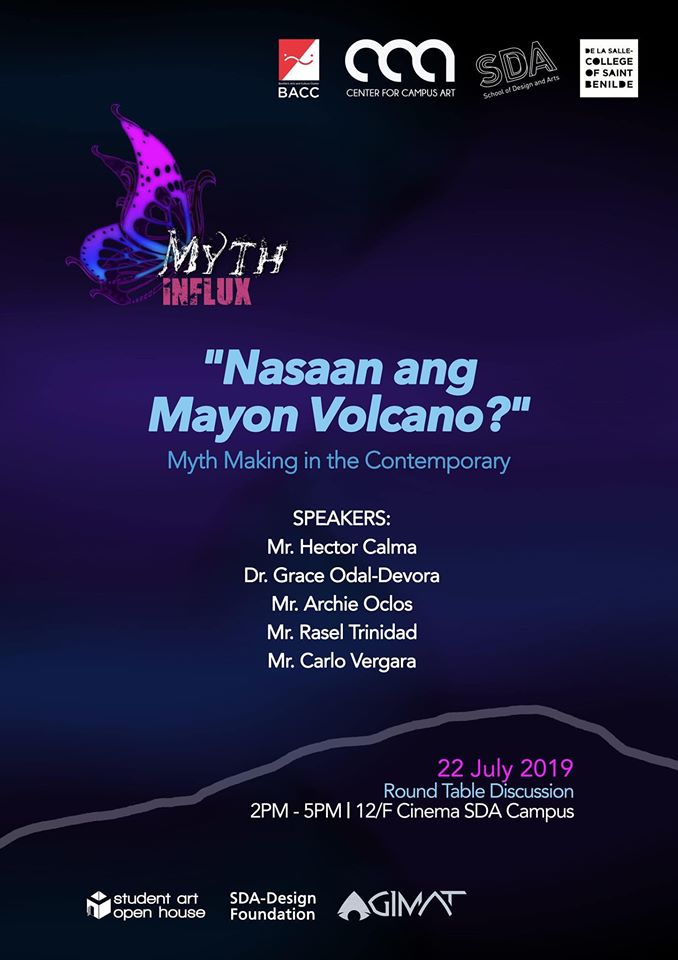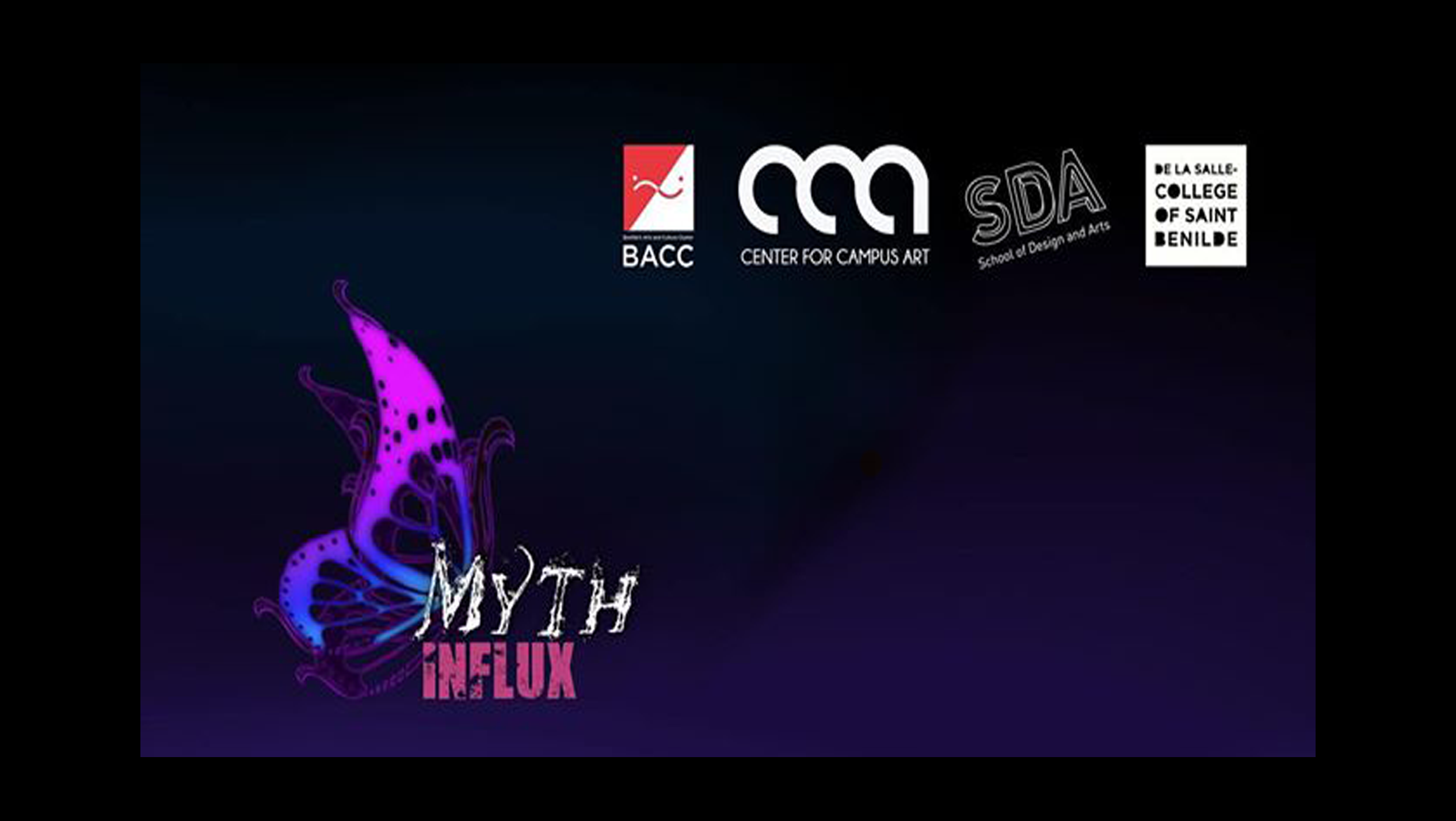With a plethora of stories on Philippine mythology and creation in the society, the School of Design and Arts (SDA), in partnership with the Center for Campus Art (CCA), spearheaded a roundtable discussion titled “Nasaan ang Mayon Volcano?: Myth Making in the Contemporary” on July 22, 2019 at the 12th floor SDA Cinema.
Official Poster of Myth Influx
With the theme “Myth Influx,” the week-long activity centralizes on myth constructed in the society by means of its representation in the current. The title of the round table discussion was based on the viral video of entertainer Mocha Uson’s claim that the location of the Mayon Volcano is in Naga City, Bicol despite its actual location being in Legazpi, Albay.
The panel of speakers consists of comic book creator Carlo Vergara, Cultural Center of the Philippines (CCP) 13 artist awardees Archie Oclos and Rasel Trinidad, Multimedia Arts (MMA) professor and filmmaker Hector Calma, and University of the Philippines (UP) professor Grace Odal-Devora.
Myth making became a part of Vergara’s life as he creates them in his comic book works from illustrations to storylines inspired by Philippine history and mythology. Through a series called “AlterNativa,” he narrated the three stories: “Catalina Ruiz,” “Haginuthaw,” and “Pugot,” a story of a playful human-like creature.
Different styles, different stories
13 artists Benildean awardees Archie Oclos and Rasel Trinidad (popularly known as “Doktor Karayom”) have their different art forms inspired by contemporary issues.
Known for his “Bakwit” mural painted at Benilde’s School of Design and Arts (SDA) parking, Oclos has a selection of works relating to myth, known as “Hindi Sila Alamat” inspired from his travels in different parts of the country upon his interaction among different indigenous tribes such as the Balaan tribe of Davao and the Aeta tribe of Pampanga highlighting on their daily lives and rituals. His perception towards the art practice is not always safe but he still continues to work for his hands as an artist based on his narratives.
Meanwhile, Doktor Karayom is known for his artworks created with only the color red, inspired by his own narrative and wide imagination. Whenever he starts his work on a blank sheet of paper, he comes to the questions of “what ifs?” before starting his art. With his work in the SDA building known as “Hindi Totoo,” he shared how the people living in the city perceive others coming from the provinces as aswang, leading to reinforce stereotypes.
Women objectification in movies
Hector Calma’s presentation on “Ding, Nasaan ang Bato? At Ang Mga Babae sa Pelikulang Pilipino” tackles the portrayal of women's inferiority in movies through the characteristics of the Filipino superhero “Darna.” In the context of the Philippine society, it shows the dominance of patriarchs as the portrayal of media towards women makes them powerless.
“Filmmakers and storytellers, dapat maging responsable tayo sa pag-present ng story kasi nagiging acceptable [ang isang anggulo ng istorya sa lipunan],” Calma called on to break the stigma of women inferiority. The representation of Darna’s sidekick “Ding” calls on men to help women become empowered.
Babaylan coming to life
Lastly, Dr. Odal-Devora shared her experience of doing dances known as “Sayaw-Mutya,” which comes from the inner divine power. With having experiences of dance performances in different events, Odal-Devora shared on the Babaylan being a representation of one’s true self in which he learns to go with the natural flow of having consciousness. With everything coming in consciousness, it creates a connection from oneself and as well, with the community for healing, transformation, renewal and god-realization.
Other workshops and talks include: “Sinsin Workshop” by folk artists of Paete and Pakil Laguna that focuses on carving skills and making paper mache; “Baybayin Workshop” by Mr. Leo Castro and; “Books Come Alive!” Human Library showcasing the College’s faculty-artists in their respective fields together with the launch of the CCP Encyclopedia and Manila Bulletin’s Filipino Artists In their Studio Volume 2.
Lastly, a culmination program was held where students and artists showcased performances in sound and movement through traditional chants, dances, and contemporary bands that played on the last day.


